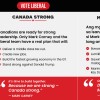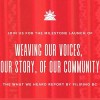Philippine ‘tiger’ economy roars in 2013 by Mary-Ann Mandap
The Philippines continued to roar loudly in 2013 as it led the pack of Asian tiger economies advancing amid global uncertainties.
Positive developments surprised even global watchers. The country’s 2013 gross domestic product (GDP) growth, was sustained at above 7 percent throughout the year, making it among the fastest growing in the world.
For the first time, the Philippines received in March an investment grade rating from a major global debt watcher. Fitch Ratings gave the country its long-awaited credit rating upgrade. President Benigno S. Aquino III, in a statement, said, “this is an institutional affirmation of our good governance agenda: Sound fiscal management and integrity-based leadership has led to a resurgent economy in the face of uncertainties in the global arena. It serves to encourage even greater interest and investments in our country.”
This was followed by in May by Standard and Poor’s upgrade of the country’s long-term foreign currency credit rating to within one rung of investment grade. The U.S. rating outfit cited the government’s improving finances.
A credit rating upgrade means lower cost of borrowing for the Philippines. According to Aquino, “this means much more than lower interest rates on our debt and more investors buying our securities.”
Meanwhile, completing the nation’s ascent to investment rank, Moody’s Investor Service in October raised the government credit rating to Baa3, becoming the last major credit rater to give the Philippines an investment grade rating. Moody’s, in a statement, cited “robust economic performance, ongoing fiscal and debt consolidation, political stability and improved governance.”
Finance Secretary Cesar Purisima noted that this is the 17th positive rating given the Philippines since President Aquino took office.
The Philippines also outpaced neighbors in several global rankings. It became the fastest-growing among the ASEAN-5 economies, comprised by regional leaders Indonesia, Malaysia, Singapore, Thailand and the Philippines. It likewise led ASEAN neighbors in terms of improving competitiveness and its stock market, based on the Thomson Reuters South East Asia Index, a highly representative indicator of stocks in Asean countries.
Since Aquino took office, the Philippine Stock Exchange index has soared by 86 percent, becoming the world’s best performer out of 45 emerging and developed markets tracked by Morgan Stanley Capital indices.
This economic performance is more notable in light of the regional slowdown that has seen Indonesian and Malaysian economies pummeled by a slowing China and capital flight to developed countries. Thailand also recently entered into recession.
Meanwhile, World Bank’s Country Director Motoo Konishi lauded the Aquino government for its persistent focus on good governance resulting in higher growth.
In a speech, Konishi said, “the Philippines is no longer the sick man of Asia, but the rising tiger. There is macroeconomic stability. The government’s finances are sound and improving. The fight against corruption is paying off. There is greater transparency. The leadership’s commitment to good governance is inspiring confidence in the country’s prospects. As a result, the Philippine economy is going strong despite the global uncertainty.”
In another positive development, the Philippines leaped six notches for the year to 59th spot out of 148 countries in the global competitiveness list. The country consistently rose in the Geneva-based World Economic Forum’s (WEF) Global Competitiveness Index.
This is the fifth consecutive year that the Philippines posted significant strides in the global list. Since 2009, when the Philippines ranked 87th, the country has leapfrogged 28 notches already, making the Philippines one of the most improved in the world.
There is more good news. In September, the Philippines was tagged as the most improved among the 60 economies in Grant Thornton’s “Global Dynamism Index” as it climbed 25 places to the 21st spot this year.
The report, which ranks countries according to changes implemented to encourage the growth of businesses, gave the Philippines an index score of 55.7 points.
“The fast-paced growth of the Philippine economy certainly underlined our substantial rise in this year’s GDI,” said Ma. Victoria Españo, chair and chief executive officer of Punongbayan & Araullo, a Grant Thornton member firm.
Recently, a global report lauded the Philippines for its readiness for change and ranked it among the top 20 in the world.
The Philippines was ranked 18th and was the top performer among lower-middle income countries in a study conducted by KPMG International in partnership with Oxford Economics. The 2013 Change Readiness Index (CRI) measures the capacity of countries to respond to change, caused by shocks such as natural disasters or longer-term trends like technology, demographics, global competition and investment.
According to Aquino, the Philippines is a story of transformation. “The sick man of Asia is now revitalized, more dynamic than it ever was in its history, marching toward equitable progress,” he said.
For 2014, analysts say the tiger will continue to roar as the Philippine economy is expected to sustain its strong growth for the year and will keep its place as one of the world’s fastest growing economies.
 Canada
Canada







